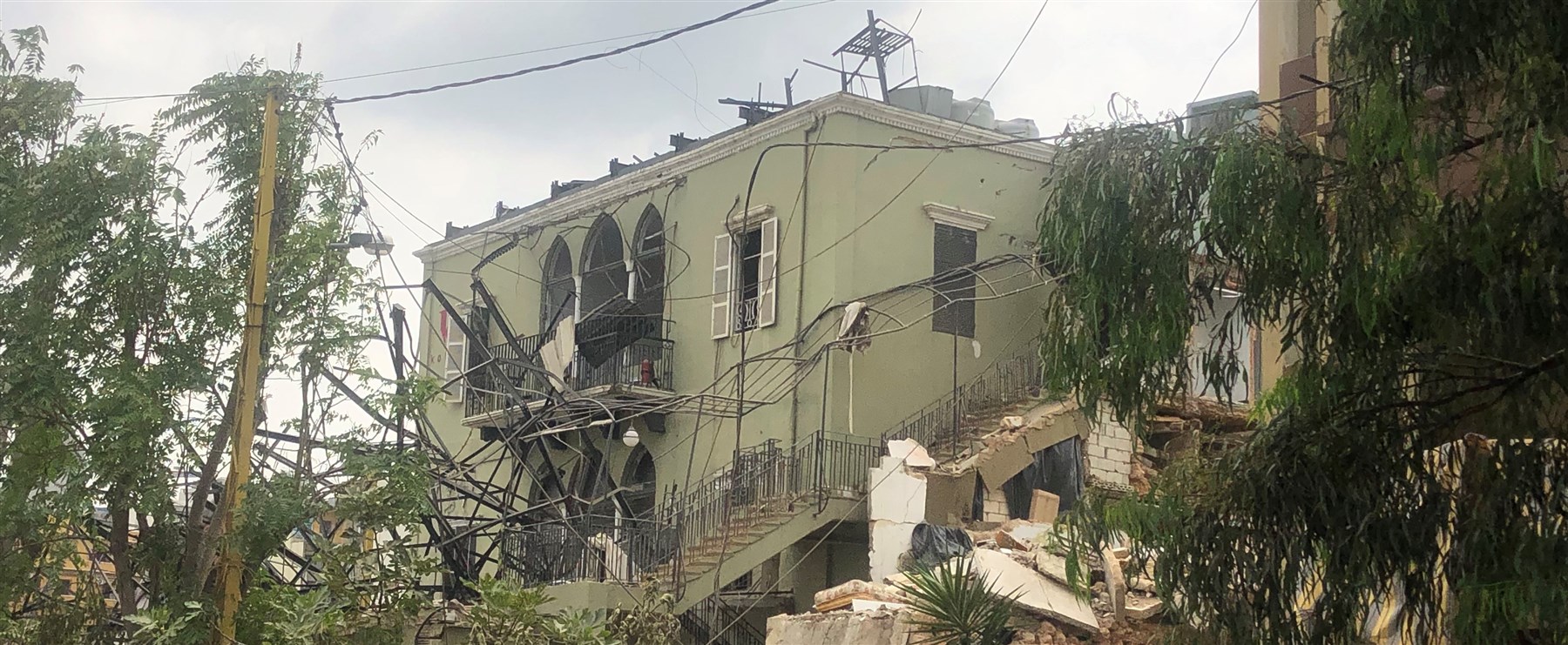Post-Disaster Karantina: Towards a People-Centered Heritage-Led Recovery
Howayda Al-Harithy, Batoul Yassine - 06.10.2020

A house in Karantina after the blast (Photo: Hayfa Abou Ibrahim)
In the aftermath of violent acts of rupture, cities endure erasures of place and memory and disruptions to socio-economic and cultural practices.
×
Mending emotional, spiritual, and socio-cultural connections becomes critical for any process of recovery — with cultural heritage, that includes sites of social significance and shared memories — serving as a catalyst for a successful recovery process. In this sense, cultural recovery operates beyond the limited definition of heritage tied to the physical and historical and goes beyond the urgent recovery process that is people-centered, heritage-led, and place-specific to address post-disaster basic needs. Crucially, it attends to socio-spatial practices that are part of the intangible heritage, and rebuilds, over the long-term, undermined cultural practices, social ties, and economic networks. Such industrial neighborhoods and informal settlements as Karantina, characterized by a deep social, cultural, and economic history, are therefore as deserving as any other neighborhood of a recovery process that is people-centered, heritage-led, and place-specific.
×
An Explosion in the City
August 4, 2020, is a significant date in the history of Beirut. On this day, a massive explosion severely damaged the port and its surrounding neighborhoods, including Gemmayze, Mar Mikhael, Geitawi, and Karantina. More than 200 people were killed, 6,500 injured, and almost 300,000 displaced. The city lost a significant number of its heritage sites, both tangible and intangible. Material damage to historical buildings and community spaces ingrained in the collective memory of the residents of the city is tangible. Intangible losses pertain to the economic and socio-spatial practices associated with these spaces. Not only have these neighborhoods sustained destruction on a wide scale, they are now, once again, exposed to the threat of vulture real-estate developers who view the explosion as an investment opportunity. Karantina, one of the poorest neighborhoods in the city, historically a major destination for migrant workers and refugees, was first hit by the explosion and will endure the impact of its long-lasting ramifications.
×
Karantina
Located on the edge of the port, Karantina's urban role changed throughout its history. The neighborhood is named after its original purpose as an Ottoman quarantine facility, built in the 1830s. In the early 1900s it became a work destination for rural-urban migrants and workers from nearby countries. It was also a destination for Armenians, Kurds, and Palestinians seeking refuge after the Armenian Genocide of 1915, World War I, and the 1948 Nakba. Over time, Karantina grew into a working-class neighborhood providing labor to the local trade, weaving, and handicrafts industries in the 1960s. During the civil war, the area was a site of confrontation between fighting factions, including the PLO and right-wing Christian militias who perpetrated one of the bloodiest massacres in the war. Since 2011, the area has become home to a Syrian community that fled the war. As if these accumulating tragedies were not enough, Karantina is perceived by its residents as shaken hardest by the explosion at the port on August 4. In an interview with Batoul Yassine, Lilyan, a 50-year-old woman and long-time resident of Karantina, conveyed this sentiment, tears in her eyes: "All of the tragedies that Karantina went through are one thing and the blast is another. It is on a greater tragic scale. Just after the explosion, I recalled all the devastating scenes of the civil war... bodies shattered, corpses hanging from balconies, children screaming under the rubble and calling for rescue. But this time, we were baffled; was it an Israeli attack or an explosion?!"